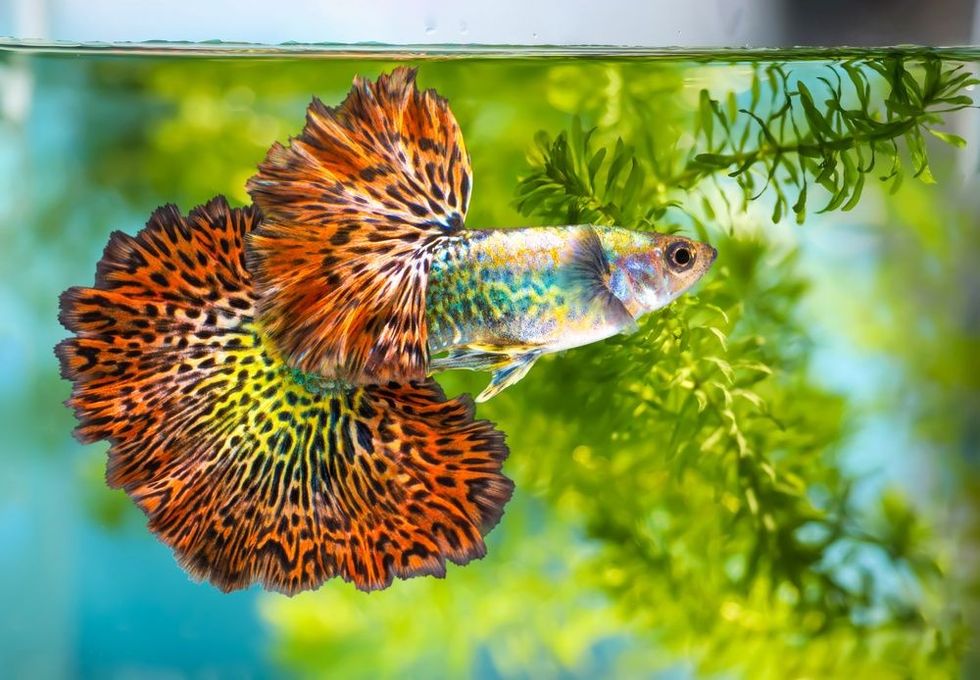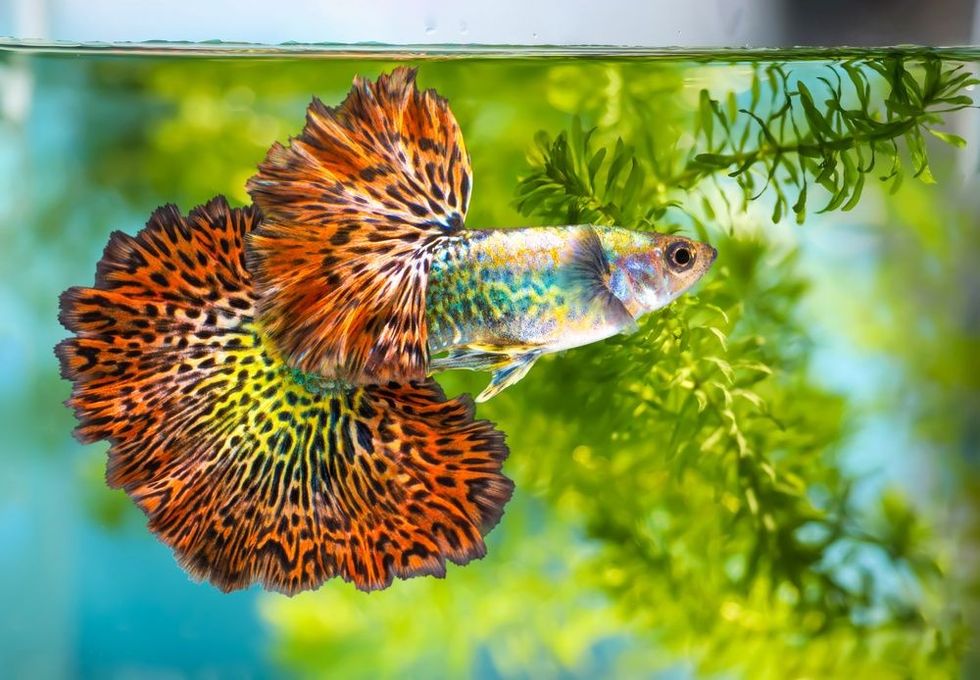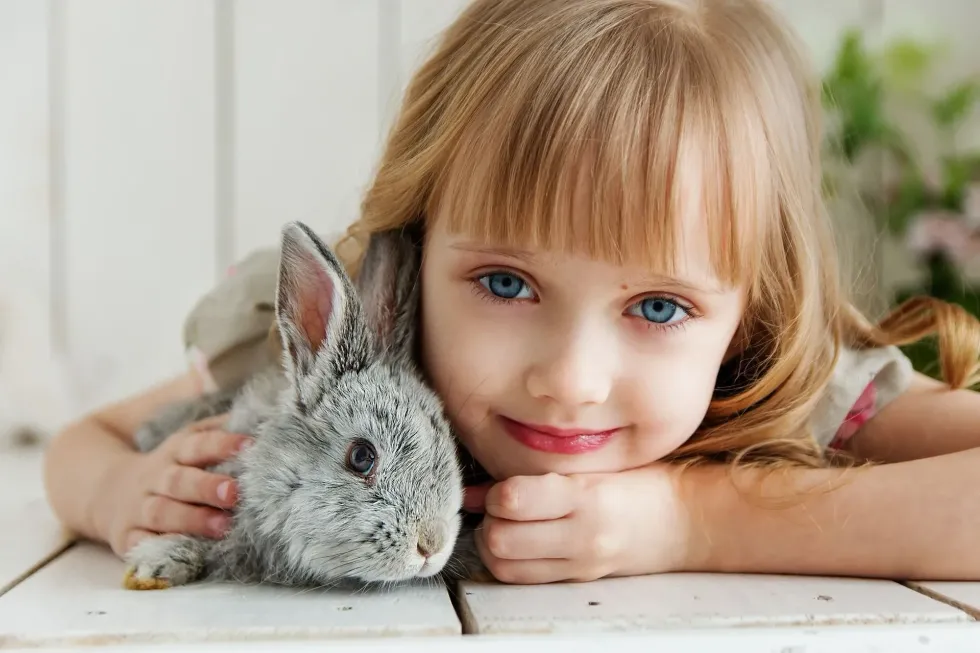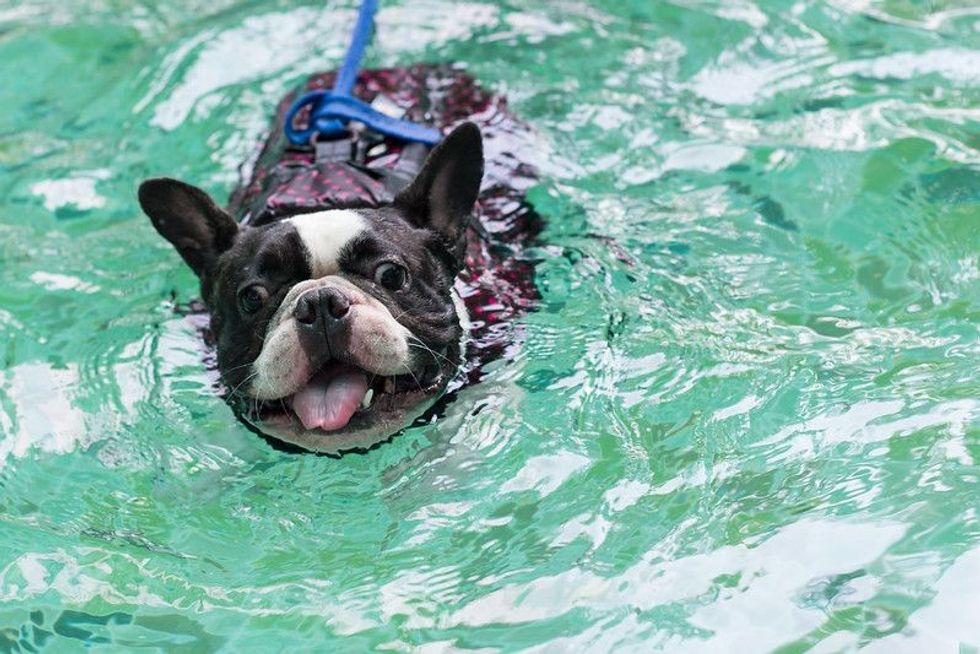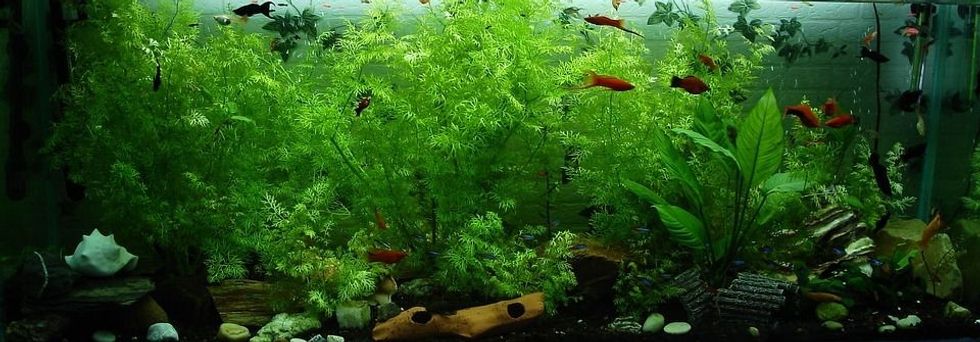Fancy Guppies: Learn About Why Your Fancy Fish Is A Popular Pet

Guppies are one of the most popular fish that come in a huge variety of body colors and tail patterns.
The origin of the guppies is South America, but now they are present all over the world. They belong to the Poeciliidae family and are capable to adapt themselves to changing environments.
The guppy fish varies in body size, and are live-bearing. Their scientific name is Poecilia reticulata.
They are omnivores and their diet includes insect larvae and benthic algae, along with several other types of insects and plant-based food. They grow at a good rate in warmer water, owing to their high metabolism.
The guppies are an important species for the ecosystem. They are widely used to control mosquito larvae in stagnant water.
These freshwater guppies are popular fish for the aquarium due to their multi-colored body. The guppy body is small and elongated.
They exhibit sexual dimorphism wherein the males are smaller than the females. The length of the males is about 1.4 in (3-6 cm), whereas the females are about 1.2-2.4 in (3-6 cm).
The adult male guppies possess a narrow copulatory organ called gonopodium on their anal fin and come with more colorful and long tails. The female guppies are mostly lead-gray in color with thick bodies.
Their lifespan in an aquarium can reach up to three years if they are well cared for. They bear small teeth in both their jaws.
Selective breeding leads to the development of guppies in a multitude of colors. This also results in the development of long tails in them.
Mainly guppies exhibit four basic colors, which when mixed, develop into different other colors. These four colors are blond, albino, blue, and wild color. The tail shapes of the guppies are also fascinating and come in an array of patterns.
The popular patterns are round, pointed, pintail, swordtail, flag tail, delta tail, and fan-shaped tail. Interestingly, their naming is done by the color of their tail and not the color of their body.
The guppies are also excellent social creatures. They make good friends with other fish in the community tank, like the catfish, goldfish, platyfish, and tetras.
Breeders prefer their active nature and even temperament, which makes it easier for them to deal with the guppies. Although they are known to be peaceful creatures, they may get into fights with the Betta fish or the Siamese fighting fish.
These two fish species should not be kept together in the aquarium as this will lead to the ripping and shredding of each other's fins. The guppies are also known to attack newborn babies or fry.
Although they are easy to maintain, the guppies are prone to a variety of fungal infections. The plants or other substrate decorations may introduce bacteria and other pathogens into the aquarium, thereby making it an unhealthy environment for the fish to thrive.
Therefore, it is necessary to maintain a balanced diet and a clean aquarium. They thrive well in hard water with a pH level of 7.0 or more.
The high pH and the mineral salts of the hard water help the fish to become healthy and as a result, they flourish well in their habitat. Another interesting fact for the breeders is that the guppies reproduce more babies if the water temperature is increased by 3-4 ℃ (37.4-39.2 ℉).
The warmer water also makes them resilient with an increased life expectancy. Continue reading to know more about the fancy guppy fish and their different types.
Want to explore more guppy facts? Then check out the guppy temperature and how big do guppies get, here on Kidadl.
Why are guppies so popular?
The wide range of body coloration and easy breeding of guppies make them popular among breeders. Apart from their flamboyant appearance, the guppy fish is extremely high-spirited. This dynamic nature of guppies qualifies them as excellent community fish.
The gaudy guppy is first spotted in South America in the year 1860. Later, it became a popular fish in the pet trade and is now marketed throughout the world.
This hardy fish can also be used for pest control. The disease-causing mosquito larvae are preyed on by the guppies.
Apart from this, they are highly captivating due to the different shapes and sizes of their fins. The tail fin showcases an array of patterns with multiple colors. The solid color of their body is adorned by their rainbow-colored caudal fin, which is longer in the male guppy.
Also, they are not aggressive fish, and therefore, can be kept in a large number in a single guppy tank. The females produce more than a hundred fry in just a month or two.
Thus, the breeders can gain a lot in pet trades by selling the newborns. In terms of price, the guppies are sold in a very modest range.
One can easily buy a guppy for just $3 from the local pet stores. They are highly marketed due to their eye-catching color combinations. Guppies are easy to breed using just one male with two females in a guppy-only tank.
Many people order guppies in the most unique colors with varied tail lengths, which can cost up to $100. This definitely draws attention towards the aquarium.
However, the highly inbred guppies can become weak due to the over-crowded tanks and excessive hybridization, which is done in order to get those unique color combinations. Thus, it is important for the guppy owners to take good care of them.
Do fancy guppies get lonely?
Just like any other pet, guppies too get lonely. This is mainly due to the fact that guppies are highly social and active creatures.
They prefer to stay in the company of other fish of their own species or any other non-aggressive fish species. A single guppy swimming in an aquarium is not a great sight to look at.
If the right number is not maintained, they can get stressed. This can affect their life span and also, it will lead to a large number of diseases in them.
An ideal guppy group can comprise two females with a single male. This makes them the most dynamic in the aquarium.
This particular group selection is mainly due to the fact that male guppies tend to chase the females a lot for reproduction, thereby stressing out the females. It is essential to keep in mind that guppies are predated by several fish species, like the Bala sharks and Tiger barbs.
Therefore, they should not be mixed with these predatory fish species.
Guppies get along pretty well with other community fish, like the catfish, swordtails, cardinal tetras, honey gouramis, mollies, etc. However, the water parameters should be met before putting them together.
The larger the aquarium, the more healthy the fish will become. Another important fact that is to be considered is that the male guppies together can become aggressive sometimes, without the presence of any female fish.
This causes them to bully and compete with each other, thereby attacking and ripping out their fins. It is best to keep them in association with one or two females at least, which will also help them to display brighter body colors.
The guppies will not feel lonely if they are kept in groups. This will eventually ensure a stress-free and disease-free life for the fish.
How many different types of guppies are there?
There are more than 300 known species of guppies, out of which only a few are involved in the pet trade. The hybrids are impossible to identify without DNA testing.
Most of the domesticated guppy fish are hybrids, which are cross-bred with at least three different guppy species. We will discuss some of the most notably vibrant guppies in the following section.
The common guppy or the fancy guppy is the oldest species that are available in large numbers in the pet markets. They are notable for their exquisite array of tail shapes and vibrant colors.
The Endler's guppies are much related to the wild fish types and their identification is currently under debate. These species are first identified during the 1960s by the renowned scientist, John Endler, and are therefore named after him.
A rare species is the Swamp guppy, which is able to tolerate brackish water and is mostly found in coastal areas. They also inhabit the estuaries of Trinidad and exhibit fascinating colors. The Scarlet Swamp guppy is a breathtaking fish and is highly in demand.
The guppy species differ in body coloration, tail shape, and patterns as well as their eye colors. Based on these factors, breeders and pet owners, select their choice of guppy.
Guppy Types By Body And Tail Patterns
Guppies are hybridized to achieve a wide range of color combinations and remarkable tail patterns. Beautiful markings appear throughout the body and the tail of these fish.
The tuxedo guppy has two sets of color on its body, a lighter shade on the front portion and a much darker hue behind. The tail and the dorsal fin are orangish-red in color.
Cobra guppies resemble that of the snakeskin morph, with vertical rosette markings on both their tail and their body. Most females acquire this pattern.
Other guppies with similar body patterns are the snakeskin guppy and the lace guppy, the sight of which surely reminds of a snake creeping through a bush. A stunning body pattern is observed in the leopard guppy, which possesses dark blue blotches on top of soft opaque color on the caudal fins and throughout the body.
The mosaic guppies are another type that showcases an exquisite array of patterns all over its tail and body. The shape of its tail is fan-shaped with characteristic bristles at the tip, that bear irregular markings of blue and black.
The glass belly guppies undergo a genetic change leading to the deletion of the guanine protein.
This leads to the formation of an opaque body that does not shimmer under the light. They are mostly reddish on the base.
The Pintail guppy has a round tail with a central axis that sticks out of its tail tip, giving it a needle-like appearance. Another species is the spear tail guppy, which also has a round tail.
This tail is spear-shaped at the tips. A newly found species is the half-moon tail guppy, whose tail stretches at about 180 degrees and resembles a half-moon.
The spade tail guppy also called a cofer, bears a spade-shaped tail, with a pointy tip. One of the most scintillating guppies is the swordtail guppy.
It has a long protrusion originating from the upper end of its tail, which is almost parallel to its body and at an angle of 15 degrees. The yellow-colored body with striking patterns of black and bluish hues make it look quite appealing in the aquarium.
The double swordtail and the bottom swordtail share similarities with this guppy in terms of their tail.
Their rays exist in the same length as that of their body, and the outer ridges are inclined at an angle of 30 degrees or even more. A rare-looking guppy is a scarlet or flag-tailed, which possesses a rectangular tail with reddish stripes at the tips.
A much recent star in their family is the round tail guppy, which gained immense popularity among European breeders. It bears a short tail with curved ridges.
The lyretail guppy displays a stunning tail that looks like a lyre. It has brushed tips at the end of the tail, which is bifurcated in two portions.

Guppy Types By Coloration
A wide display of colorations is seen in the guppies, a feature that makes them the most popular fish among the breeders. The exotic color combinations of these fish illuminate the fish tank. Four main base-colored species are cross-bred to achieve rainbow colorations.
Albino guppies look enthralling due to their light-colored bodies. They lack the pigment melanin, which is responsible for producing dark colorations.
Thus, their body appears to be pinkish white along with pink-colored eyes. Their tail is quite big in size with pastel shades and blue striations.
They can be distinguished from the white guppies, which does not have a pinking hue to their body. These are milky white and do not exhibit any other secondary colors.
Black guppies also exist which have mottled gray or charcoal black bodies. Coming down to a lighter scale of blue is the blue guppy, which possesses different shades of this particular color.
Sky blue and indigo are mostly seen in them. They shimmer under light and produce other delicate bluish colorations.
In a similar category lies the neon blue species, which also come in red color. Their fan-shaped solid colored tail is extremely eye-catching. Swordtails and the Endler species often appear in bi-colors, that look stunning in the fish tank.
This is the Japanese blue guppy morph, which is usually an intense blue seen on the tail with a characteristic white on the body. Moscow guppy is a unique breed which is smuggled to the US from Russia in the year 1960.
They are quite expensive and are bigger in size than other species. Their body is solid colored, which is usually marron or a dark red, and their caudal fin is much longer in size.
The guppy from Thailand is the famous Jarawee Lazuli, which has a perplexing mix of neon colors on its body. Their tail is scissor-like and comes in multiple colors.
Panda guppies are cute with contrasting dark and light body colors. The tail fin comes with bluish markings while the body and head are silver with hints of blue.
Guppy Type By Eye Color
The eye color of guppies is generally black. In the case of albino species, the eye color may range from red to pink.
The real red-eye guppy does not bear the albino trait, but still possesses bright red eyes, that look absolutely stunning. This eye color can also be in a soft pink or a teal shade.
The white or albino guppies also called platinum due to their pearl-like appearance, have pinkish small eyes. Another interesting fact is that the guppy can change its eye color to a darker shade when they are triggered. Males are usually more colorful than the female species.
Caring For Your Fancy Guppy
While they are easy to maintain, guppies are prone to a large number of fungal and bacterial infections. The addition of plants and other decorative items in the aquariums can transmit bacteria to these fish. The food that they are fed by the breeders can also pass on several disease-causing pathogens to them.
It is an absolute mandate to consider all the water parameters as well as other factors that are responsible for maintaining the health of the guppies. A total of six factors should be considered before bringing your pet home.
These include the tank size, diet of the fish, breeding, behavioral triggers, water parameters, and aquarium stocking.
A trio of guppies can thrive well in a tank of 5 gal (18 l) of water. The water should be hard water with a pH of 7.0 or more.
The mineral salts of the water will enhance their metabolism. The temperature of the water should be kept on the warmer side, which results in the rapid rate of metabolism in these fish.
The higher temperature will also lead to the breeding of the guppies faster than their normal rate.
Filtration of the waste, food particles, and other debris, is a key aspect of guppy health, which should be carried out from time to time. In terms of diet, the guppies are omnivores, and hence, they love to eat different types of food items, including their own babies.
Thus, a strict check should be kept on the quantity of food they are fed and the newborns should be kept away from the adults before they eat them up. A lonely guppy can become aggressive, and hence the right number and breed should be maintained in the tank.
The wild males also show aggression to the male guppy, if no female guppies are kept along with them. Also, the males chase the female guppies for reproduction.
To avoid an excessive number of fry, breeders often keep them with the adults, so that they can eat up the babies.
Too much breeding of the guppies can make their progeny fragile and weak. Therefore, hybridization should be reduced in order to retain the desirable traits.
Here at Kidadl, we have carefully created lots of interesting family-friendly facts for everyone to enjoy! If you liked our suggestions for fancy guppies, then why not take a look at how long do guppies live or guppy facts?
We Want Your Photos!
More for You
See All
Bachelor of Arts specializing in English, Master of Arts specializing in English

Rajnandini RoychoudhuryBachelor of Arts specializing in English, Master of Arts specializing in English
With a Master of Arts in English, Rajnandini has pursued her passion for the arts and has become an experienced content writer. She has worked with companies such as Writer's Zone and has had her writing skills recognized by publications such as The Telegraph. Rajnandini is also trilingual and enjoys various hobbies such as music, movies, travel, philanthropy, writing her blog, and reading classic British literature.
Bachelor of Fine Arts specializing in International Business

Vikhaash SundararajBachelor of Fine Arts specializing in International Business
With a background in International Business Management, having completed his degree at the University of Hull. Vikhaash has volunteered with 'Teach For India' to help students create a monthly newsletter. In his free time, he enjoys sports and was the assistant captain of his school's hockey team. He has also gained marketing experience through an internship at Decathlon Sports India.
Disclaimer
1) Kidadl is independent and to make our service free to you the reader we are supported by advertising. We hope you love our recommendations for products and services! What we suggest is selected independently by the Kidadl team. If you purchase using the Buy Now button we may earn a small commission. This does not influence our choices. Prices are correct and items are available at the time the article was published but we cannot guarantee that on the time of reading. Please note that Kidadl is a participant in the Amazon Services LLC Associates Program, an affiliate advertising program designed to provide a means for sites to earn advertising fees by advertising and linking to Amazon. We also link to other websites, but are not responsible for their content.
2) At Kidadl, we strive to recommend the very best activities and events. We will always aim to give you accurate information at the date of publication - however, information does change, so it’s important you do your own research, double-check and make the decision that is right for your family. We recognise that not all activities and ideas are appropriate for all children and families or in all circumstances. Our recommended activities are based on age but these are a guide. We recommend that these ideas are used as inspiration, that ideas are undertaken with appropriate adult supervision, and that each adult uses their own discretion and knowledge of their children to consider the safety and suitability. Kidadl cannot accept liability for the execution of these ideas, and parental supervision is advised at all times, as safety is paramount. Anyone using the information provided by Kidadl does so at their own risk and we can not accept liability if things go wrong.
3) Because we are an educational resource, we have quotes and facts about a range of historical and modern figures. We do not endorse the actions of or rhetoric of all the people included in these collections, but we think they are important for growing minds to learn about under the guidance of parents or guardians.
